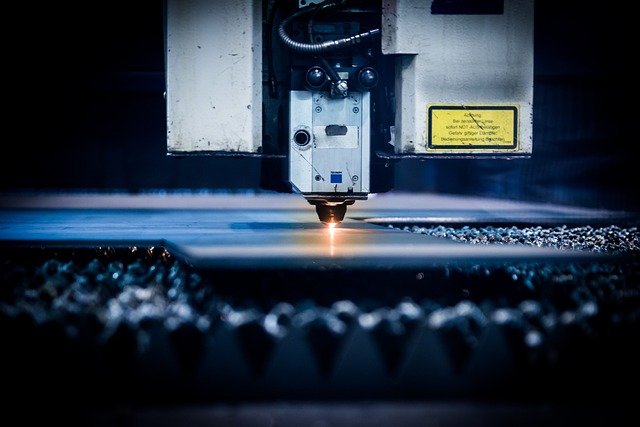Unlocking the Power of Laser-Cutting and Welding Machines for Your Workshop
Modern workshops are experiencing a technological revolution, with laser-cutting and welding machines leading the charge in precision manufacturing. These advanced tools combine exceptional accuracy with versatility, enabling craftspeople and manufacturers to achieve results that were once impossible with traditional methods. From intricate metalwork to heavy-duty fabrication, laser technology is reshaping how workshops approach complex projects, offering unprecedented control over material processing while reducing waste and improving efficiency.

How Do Laser-Cutting Machines Achieve Superior Precision?
Laser-cutting machines operate using focused light beams that generate intense heat, melting or vaporizing materials along predetermined paths. This concentrated energy source allows for cutting tolerances as tight as ±0.003 inches, making them ideal for applications requiring exact specifications. The computer-controlled nature of these systems eliminates human error while maintaining consistent quality across production runs.
The precision extends beyond mere cutting accuracy. These machines can handle materials ranging from thin sheets to thick plates, adjusting power levels and cutting speeds automatically based on material properties. This adaptability means workshops can process everything from delicate electronics components to robust automotive parts using the same equipment, maximizing return on investment.
What Makes Laser Welding Machines So Versatile?
Laser welding machines excel in joining dissimilar materials and working in confined spaces where traditional welding methods struggle. The concentrated heat input creates narrow heat-affected zones, preserving material properties while producing strong, clean joints. This characteristic proves invaluable when working with heat-sensitive materials or components requiring minimal distortion.
The non-contact nature of laser welding eliminates tool wear and reduces maintenance requirements compared to conventional welding techniques. Operators can achieve consistent results across various material thicknesses and compositions, from stainless steel to aluminum alloys, making these machines suitable for diverse industrial applications.
How Can These Technologies Enhance Your Workshop’s Capabilities?
Integrating laser-cutting and welding machines transforms workshop operations by reducing setup times and increasing throughput. Traditional machining processes often require multiple tool changes and lengthy preparation periods, while laser systems can switch between cutting patterns instantly through software adjustments. This flexibility allows workshops to accept smaller batch orders that would be unprofitable using conventional methods.
Quality improvements represent another significant advantage. Laser processing produces clean edges that often require no secondary finishing, reducing labor costs and delivery times. The repeatability of laser systems ensures consistent quality across production runs, building customer confidence and reducing rejection rates.
| Machine Type | Manufacturer | Power Range | Cost Estimation |
|---|---|---|---|
| Fiber Laser Cutter | Trumpf | 1-12kW | $150,000-$800,000 |
| CO2 Laser Cutter | Mazak | 2-6kW | $120,000-$500,000 |
| Laser Welding System | IPG Photonics | 500W-10kW | $80,000-$600,000 |
| Handheld Laser Welder | Raycus | 1-2kW | $15,000-$45,000 |
Prices, rates, or cost estimates mentioned in this article are based on the latest available information but may change over time. Independent research is advised before making financial decisions.
What Future Trends Are Shaping Laser-Cutting and Welding?
Artificial intelligence integration represents the next frontier in laser technology development. Smart systems can automatically adjust parameters based on real-time feedback, optimizing cutting speeds and power levels for different materials without operator intervention. This advancement promises to further reduce training requirements while improving process consistency.
Remote monitoring capabilities are becoming standard features, allowing operators to oversee multiple machines from centralized locations. This connectivity enables predictive maintenance scheduling and reduces downtime through early problem detection. Cloud-based software platforms are also emerging, providing access to cutting patterns and welding procedures from anywhere with internet connectivity.
Hybrid manufacturing systems combining additive and subtractive processes are gaining traction, with laser technology playing crucial roles in both material deposition and finishing operations. These integrated approaches allow workshops to produce complex geometries that would be impossible using traditional manufacturing methods alone.
Conclusion
Laser-cutting and welding machines represent transformative investments for modern workshops seeking to enhance their capabilities and competitiveness. The precision, versatility, and efficiency these technologies provide enable businesses to tackle increasingly complex projects while maintaining high quality standards. As costs continue to decrease and capabilities expand, laser technology is becoming accessible to workshops of all sizes, democratizing advanced manufacturing capabilities that were once limited to large industrial facilities. The future belongs to workshops that embrace these technological advances, positioning themselves at the forefront of precision manufacturing.




